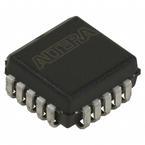This datasheet describes configuration devices for SRAM-based look-up table (LUT) devices.
●Features
●Configuration devices for SRAM-based LUT devices offer the following features:
●■ Configures Altera ACEX 1K, APEX 20K (including APEX 20K, APEX 20KC, and APEX 20KE), APEX II, Arria GX, Cyclone, Cyclone II, FLEX 10K (including FLEX 10KE and FLEX 10KA) Mercury, Stratix, Stratix GX, Stratix II, and Stratix II GX devices
●■ Easy-to-use four-pin interface
●■ Low current during configuration and near-zero standby mode current
●■ Programming support with the Altera Programming Unit (APU) and programming hardware from Data I/O, BP Microsystems, and other third-party programmers
●■ Available in compact plastic packages
●■ 8-pin plastic dual in-line (PDIP) package
●■ 20-pin plastic J-lead chip carrier (PLCC) package
●■ 32-pin plastic thin quad flat pack (TQFP) package
●■ EPC2 device has reprogrammable flash configuration memory
●■ 5.0-V and 3.3-V in-system programmability (ISP) through the built-in IEEE Std.
●1149.1 JTAG interface
●■ Built-in JTAG boundary-scan test (BST) circuitry compliant with IEEE Std. 1149.1
●■ Supports programming through Serial Vector Format File (.svf), Jam Standard Test and Programming Language (STAPL) Format File (.jam), JAM Byte Code File (.jbc), and the Quartus II and MAX+PLUS II softwares using the USB-Blaster, MasterBlaster, ByteBlaster II, EthernetBlaster, or ByteBlasterMV download cable
●■ Supports programming through Programmer Object File (.pof) for EPC1 and EPC1441 devices
●■ nINIT_CONF pin allows INIT_CONF JTAG instruction to begin FPGA configuration


